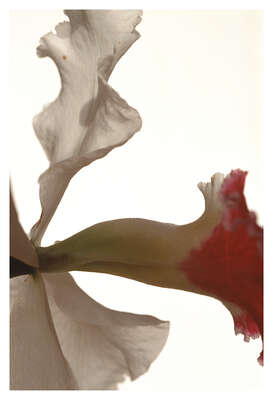
Blumenstück VI
Selection
CA$ 2,099

Thomas Florschuetz, born 1957, has been been especially dedicated to the fragment, bordering abstraction, since the beginning of his work. He was made famous towards the end of the 80’s by his… Read more
Intro Bio Exhibitions


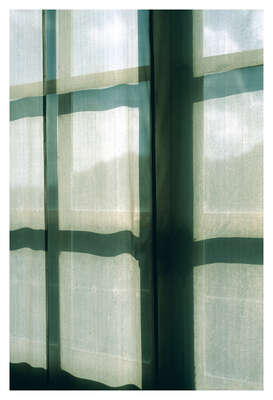

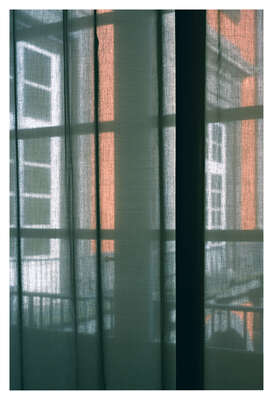

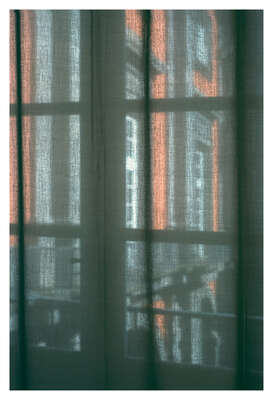

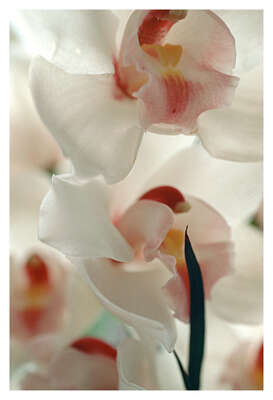



| 1957 | born in Zwickau |
| 1981 | move to Berlin (East) |
| 1988 | emigration to Berlin (West) |
| lives and works in Berlin |
| 2000 | Artist in Residence, Villa Aurora, Pacific Palisades, USA |
| 1997 | Förderpreis der Helmut-Kraft-Stiftung, Stuttgart |
| 1994 | Dorothea-von-Stetten-Kunstpreis, Bonn |
| Stipendium des Kunstfonds e.V., Bonn | |
| 1988 | Arbeitsstipendium des Senators für kulturelle Angelegenheiten Berlin |
| Artist in Residence, Lightwork, Syracuse, New York | |
| 1987 | 1. Preis für Junge Europäische Fotografie, Frankfurt/Main |
| 2005 | Drei Räume, Residence German Embassy, London |
| Christian Roellin Galerie, St.Gallen | |
| Blick ins Freie Haus am Waldsee, Berlin (Leporello) | |
| Neue Arbeiten, m Bochum, Bochum | |
| Sprichst du mit mir - Are You Talking To Me?, Kunstsammlungen Chemnitz | |
| 2004 | Canadian Center of Architecture, Montreal |
| Kunstmuseum Bonn, Bonn (K) | |
| Städtische Kunstsammlungen Chemnitz (K) | |
| BALTIC Center for Contemporary Art, Gateshead (K) | |
| 2003 | reiter, wind, Sabine Schmidt Galerie, Köln |
| Blumenstücke, Kunsthalle Harry Graf Kessler, Weimar | |
| augenstücke, Kleine Synagoge, Erfurt | |
| Ricochet-Blumenstücke, Franz Hals Museum, Haarlem | |
| Galerie Susanne Biederberg, Amsterdam | |
| 2001 | Enclosures, Gary Tatintsian Gallery, New York |
| Ricochet-Blumenstücke, Nationalgalerie, Hamburger Bahnhof, Museum für Gegenwart Berlin, Berlin | |
| Eingrenzung, Galerie Markus Richter, Berlin | |
| Blumenstücke Iris Prints, m-Fotografie, Bochum | |
| Blumen, Sabine Schmidt Galerie, Köln | |
| 2000 | Multiple Entry Extended, Galerie Markus Richter, Berlin |
| Multiple Entry, Städtische Kunstsammlungen Neubrandenburg, Neubrandenburg | |
| Don't look now, m-Fotografie, Bochum | |
| 1999 | Peripheres Begehren, Galerie Markus Richter, Berlin |
| Gliederung, Albertinum, Staatliche Kunstsammlungen Dresden, Dresden (P) | |
| Indicies, Gary Tatintsian Gallery, New York | |
| 1998 | Galerie Hübner & Thiel, Dresden |
| Ortszeit, Projekt im öffentlichen Raum, Kollwitzplatz, Berlin | |
| Vera van Laer Gallery, Antwerpen | |
| Multiple Entry, Städtische Kunstsammlung Zwickau, Zwickau (K) | |
| Anatomie einer Triptychons, Mücsarnok, Kunsthalle, Budapest (K) | |
| 1997 | Suburbia, Galerie Nikolaus Sonne, Berlin |
| Galerie Roziso, Moskau | |
| 1996 | Vor dem ersten Blick, Kunstverein Göttingen, Göttingen (K) |
| Vera van Laer Gallery, Antwerpen | |
| Galerie Hübner & Thiel, Dresden | |
| Between Two: Suburbia, Stills Gallery, Edinburgh (Leporello) | |
| Between Two: Plexus, Site Gallery, Sheffield (Leporello) | |
| 1994 | Aschenbach Galerie, Amsterdam |
| Plexus, Neuer Berliner Kunstverein, Berlin (K) | |
| Forum Stadtpark, Graz | |
| Plexus, Galerie Nikolaus Sonne, Berlin | |
| Vanishing point, Goethe-House, New York |
| 2005 | The Nature of Things, Birmingham Museum of Art |
| Das Hotel, Salzlager Hall, Tiroler Landesausstellung, Hall/Tirol | |
| Der fotografierte Mensch, Neues Museum Nürnberg | |
| Reality Reversed, Christian Dam Gallery, Kopenhagen, anschl.Christian Dam Gallery, Oslo | |
| Zeitstrecke, Villa Oppenheim, Berlin | |
| Bad Boys Of Photography, Anderson Gallery, VCU, Richmond, VA | |
| Bildwechsel 01 – Sammlung F. C. Gundlach, Deichtorhallen, Hamburg Hamburg | |
| Is – ness, Thomas Erben Gallery, New York | |
| 2004 | Rohkunstbau -Ein europäisches Portrait #2, Wasserschloss Groß Leuthen |
| La collection d’art contemporain d’agnes b., Les Abattoirs, Toulouse | |
| Dorf in die Metropole, Künstlerhaus Bethanien, Berlin | |
| 44 in 10, Sabine Schmidt Galerie, Köln | |
| Kunst in der DDR, Kunst und Ausstellungshalle der BRD, Bonn | |
| Grenzüberschreitung, m Bochum, Bochum | |
| Blow up - zeitgenössische Künstlerfotographie, Ulmer Museum, Ulm | |
| PhotoArt, RMIT Gallery, Melbourne, und Christchurch Art Gallery, Christchurch, NZL | |
| 2003 | Keep on Looking ― Fragen zur Kunst, Kunst Haus Dresden, Dresden |
| Von Körpern und anderen Dingen Deutsche Fotografie von der Weimarer bis zur Berliner Republik, City Gallery Prag, Prag, und Museum für Deutsche Geschichte, Berlin | |
| Was ich von ihnen gesehen und was man mir von ihnen erzählt hatte, Museum Folkwang, Essen Kunst in der DDR, Neue Nationalgalerie, Berlin (K) | |
| 2002 | Favela Labirinto, Paco Imperial, Rio de Janeiro |
| Zwischenspiel I Paarungen, Berlinische Galerie im Kunstforum der Grundkreditbank, Berlin (K) Zwischenspiel IV Nach der Natur, Berlinische Galerie im Kunstforum der Grundkreditbank, Berlin (K) Räume des 20. Jahrhunderts, Neue Nationalgalerie, Berlin | |
| Constructing Memory and Space, Fotografie Forum international, Frankfurt/Main | |
| Wahnzimmer Kunst in Deutschland in den 80er Jahren, Museum der bildenden Künste, Leipzig, Museum Folkwang, Essen (K) | |
| 2001 | Shelter, m Fotografie, Bochum, Museum Wiesbaden, Wiesbaden, Ulmer Museum, Ulm, Museum Kurhaus Kleve, Kleve |
| Unter der Haut, Wilhelm Lehmbruck Museum, Duisburg (K) | |
| Werken op papier, Kunsthandel Lambert Tegenbosch, Heusten, Niederlande | |
| 520 Paseo Miramar, DAAD Galerie, Berlin | |
| 2000 | Der anagramatische Körper, ZKM, Karlsruhe |
| Samizdat, Akademie der Künste, Berlin (K) | |
| La collection de photographie d'agnes b., Centre national de la photographie, Paris (K) | |
| 1999 | Tomorrow Forever, Photographie als Ruine, Kunsthalle Krems, Krems und Museum Küppersmühle |
| Sammlung Grothe, Duisburg | |
| Identity and Environment, Museum of Contemporary Art / Ludwig Museum, Budapest | |
| Foto Kunst, The Artist House, Jerusalem (K) | |
| Jahresringe, Kunstverein Apolda, Apolda | |
| Der anagramatische Körper, Neue Galerie am Landesmuseum, Graz | |
| Das XX. Jahrhundert. Ein Jahrhundert Kunst in Deutschland, Nationalgalerie Berlin, Berlin | |
| 1998 | Blick zurück nach vorn - Looking Backwards Forwards, Galerie Markus Richter, Potsdam |
| Object & Abstraction: Contemporary Photographs, Museum of Modern Art, New York | |
| [Collection '98], Galerie für Zeitgenössische Kunst, Leipzig | |
| Admissions of Identity, City Museum and Mappin Art Gallery, Sheffield und Sammlung Ludwig, | |
| Budapest (K) | |
| Signatur des Sichtbaren, Galerie am Fischmarkt, Erfurt (K) | |
| Time, Space and Architecture - Fotografie und Architektur, Galerie Markus Richter, Potsdam | |
| I Liked New York, The Lobby Gallery, Deutsche Bank, New York | |
| Transformation - Natura Naturans 3, Teatro Miela, Trieste (K) und Scuola di San Pasquale, | |
| Venedig (1999) | |
| Bilder & Grenzfälle, Brandenburgische Kunstsammlung, Cottbus, Städt. Galerie in der alten Schule, | |
| Berlin Treptow, Städt. Galerie Sindelfingen (K), Sindelfingen | |
| 100 Jahre Kunst im Aufbruch, Kunst- und Ausstellungshalle der Bundesrepublik Deutschland, | |
| Bonn (K) | |
| Under / Exposed, Projekt im öffentlichen Raum, Subway Stations, Stockholm (K) | |
| 1997 | Die dunkle Kammer-Fotografie und Körper, Galerie Markus Richter, Potsdam |
| Positionen Künstlerischer Photographie in Deutschland nach 1945, Martin Gropius Bau, Berlin (K) | |
| In Medias Res, Kunsthalle Istanbul, Istanbul (K) | |
| Interferenzen, L.A. Galerie, Frankfurt/Main | |
| Boheme und Diktatur, Deutsches Historisches Museum, Berlin (K) | |
| Allemagne, annes 80, Maison Europeenne de la Photographie, Paris | |
| Museum für neue Kunst des ZKM, Karlsruhe (K) | |
| 1996 | Technik: Fotografie. Teil 1: Thomas Florschuetz, Andreas Gursky, Richard Prince, Cindy Sherman, |
| Busche Galerie, Berlin | |
| Zeitgenössische Kunst aus der Sammlung der Deutschen Bank, ARCO, Madrid (K) | |
| 1995 | Metropole e Periferia, Museo de Arte Moderna, Rio de Janeiro (K) |
| Urbane Legenden - Berlin, Staatliche Kunsthalle Baden-Baden, Baden-Baden (K) | |
| Correspondances – Berlin - Chicago, Chicago Cultural Institute, Chicago (K) | |
| Westchor, Ostportal - 12 Positionen zeitgenössischer Kunst in Deutschland, Marstall, Berlin, Kunsthalle, Dresden, und 1996 Rheinisches Landesmuseum, Bonn (K) | |
| Memento, Haus am Waldsee, Berlin und Stadtgalerie Kiel, Kiel (K) | |
| Mehr als ein Bild, Sprengel Museum Hannover, Hannover | |
| 1994 | Memento, Galerie der Hauptstadt Prag, Prag (K) |
| Dorothea-von-Stetten-Kunstpreis 1994, Kunstmuseum Bonn, Bonn (K) | |
| Leerstand, Projekt der Leipziger Galerie für zeitgenössische Kunst, Leipzig (K) | |
| Projekt Flagge zeigen, Galerie Hans Meyer, Düsseldorf (K) | |
| Le Shuttle, Künstlerhaus Bethanien, Berlin (K) | |
| 1993 | Berlin Art Scene, Hongkong Museum of Art, Hongkong, und National Museum and Art Gallery, Singapore (K) |
| Fontanelle, Kunstspeicher, Potsdam (K) | |
| Private, Kunstwerke, Berlin | |
| Das Bild des Körpers, Frankfurter Kunstverein, Frankfurt/Main (K) | |
| Elective Affinities, Tate Gallery, Liverpool (K) | |
| Multiple Images, Museum of Modern Art, New York | |
| (K) Katalog |
Secure your favourite artwork now!
Visit LUMAS USA!
Delivery to your country is not possible from this site.
If you would like to place an order, please visit LUMAS USA.